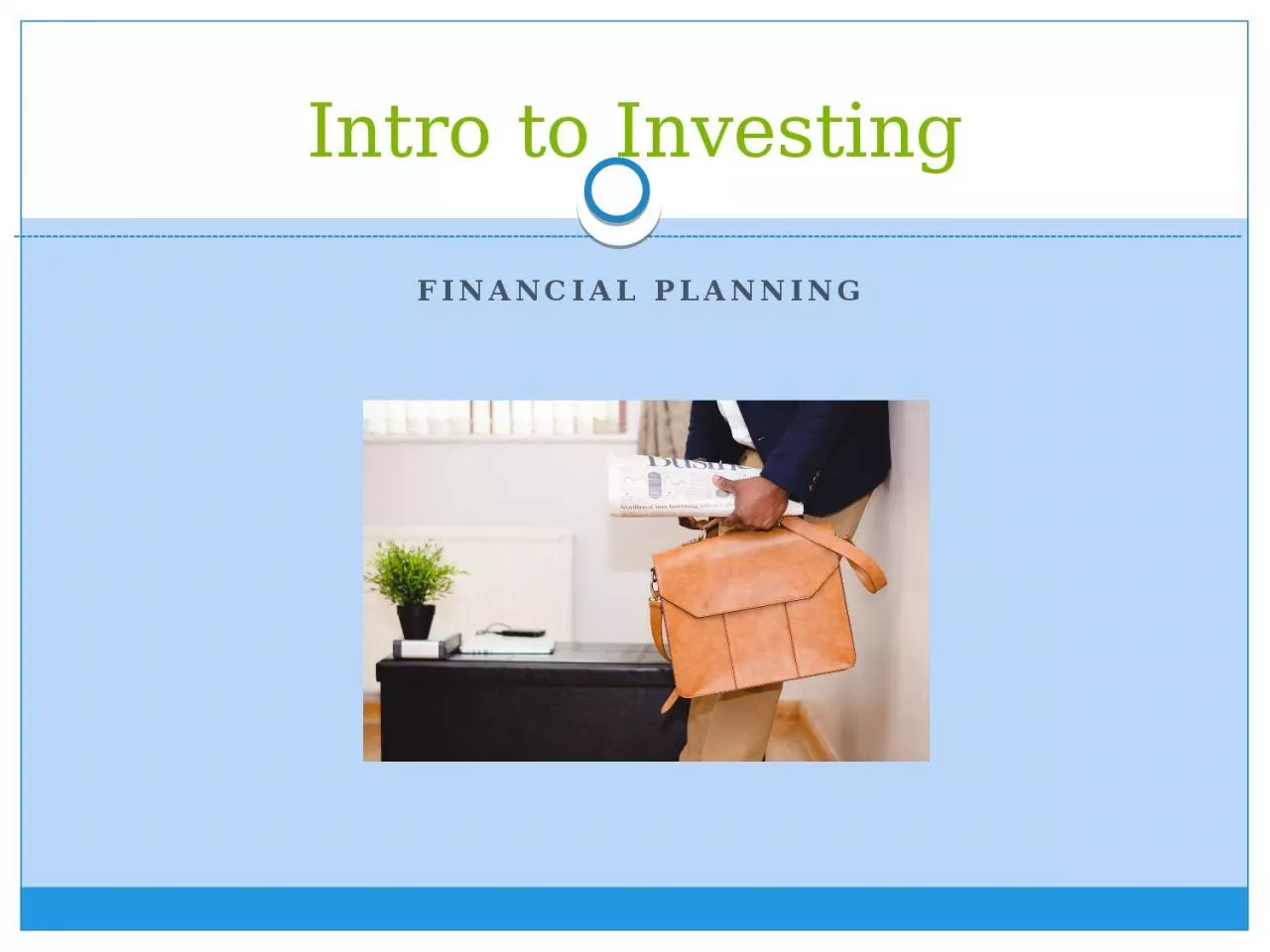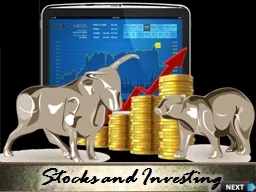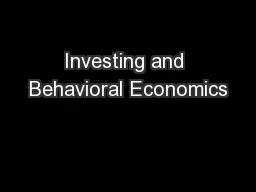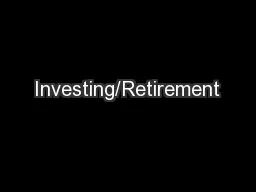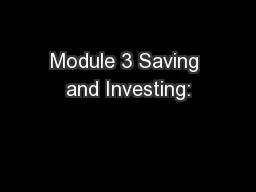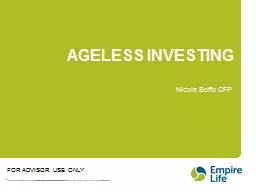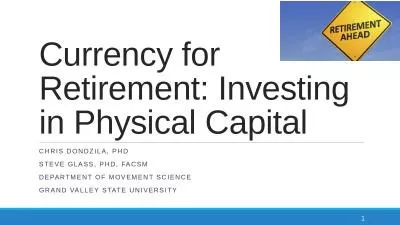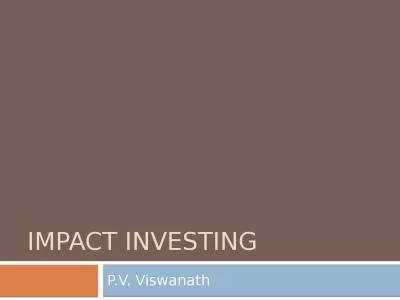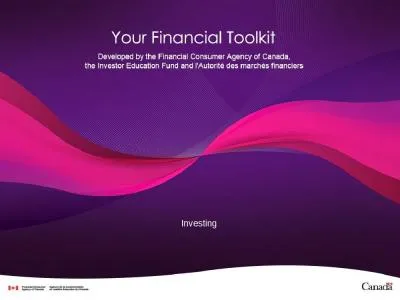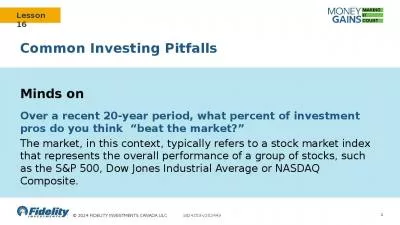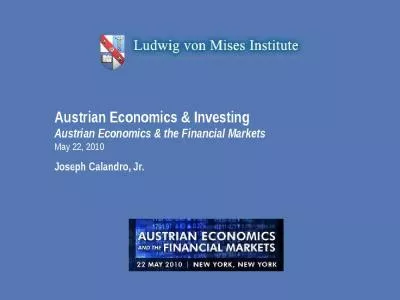PPT-Financial planning Intro to Investing
Author : molly | Published Date : 2022-07-15
Daily Objectives Students will Be able to explain diversification Compare the relationship between risk amp return U nderstand that in order to achieve long term
Presentation Embed Code
Download Presentation
Download Presentation The PPT/PDF document "Financial planning Intro to Investing" is the property of its rightful owner. Permission is granted to download and print the materials on this website for personal, non-commercial use only, and to display it on your personal computer provided you do not modify the materials and that you retain all copyright notices contained in the materials. By downloading content from our website, you accept the terms of this agreement.
Financial planning Intro to Investing: Transcript
Download Rules Of Document
"Financial planning Intro to Investing"The content belongs to its owner. You may download and print it for personal use, without modification, and keep all copyright notices. By downloading, you agree to these terms.
Related Documents

